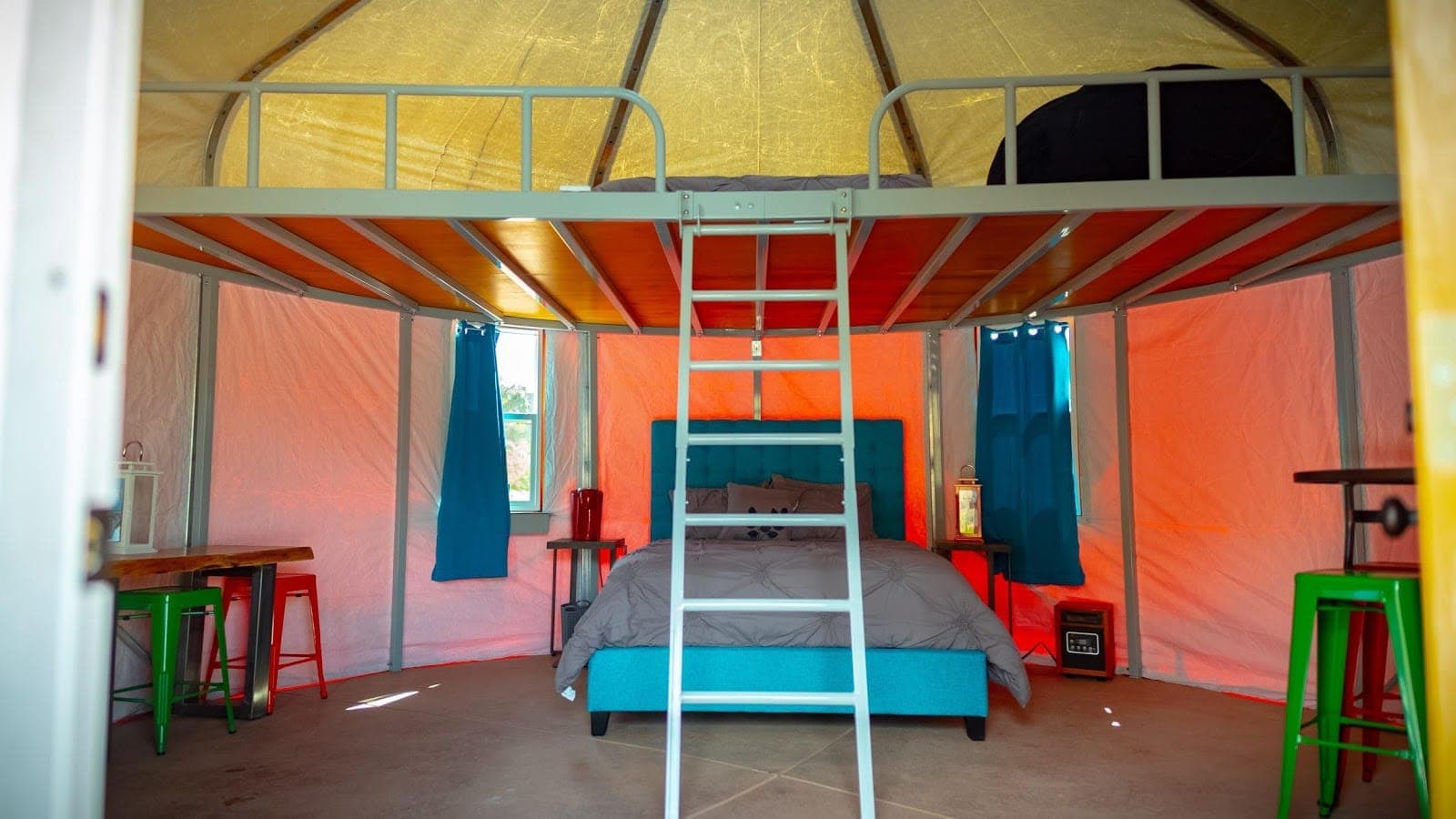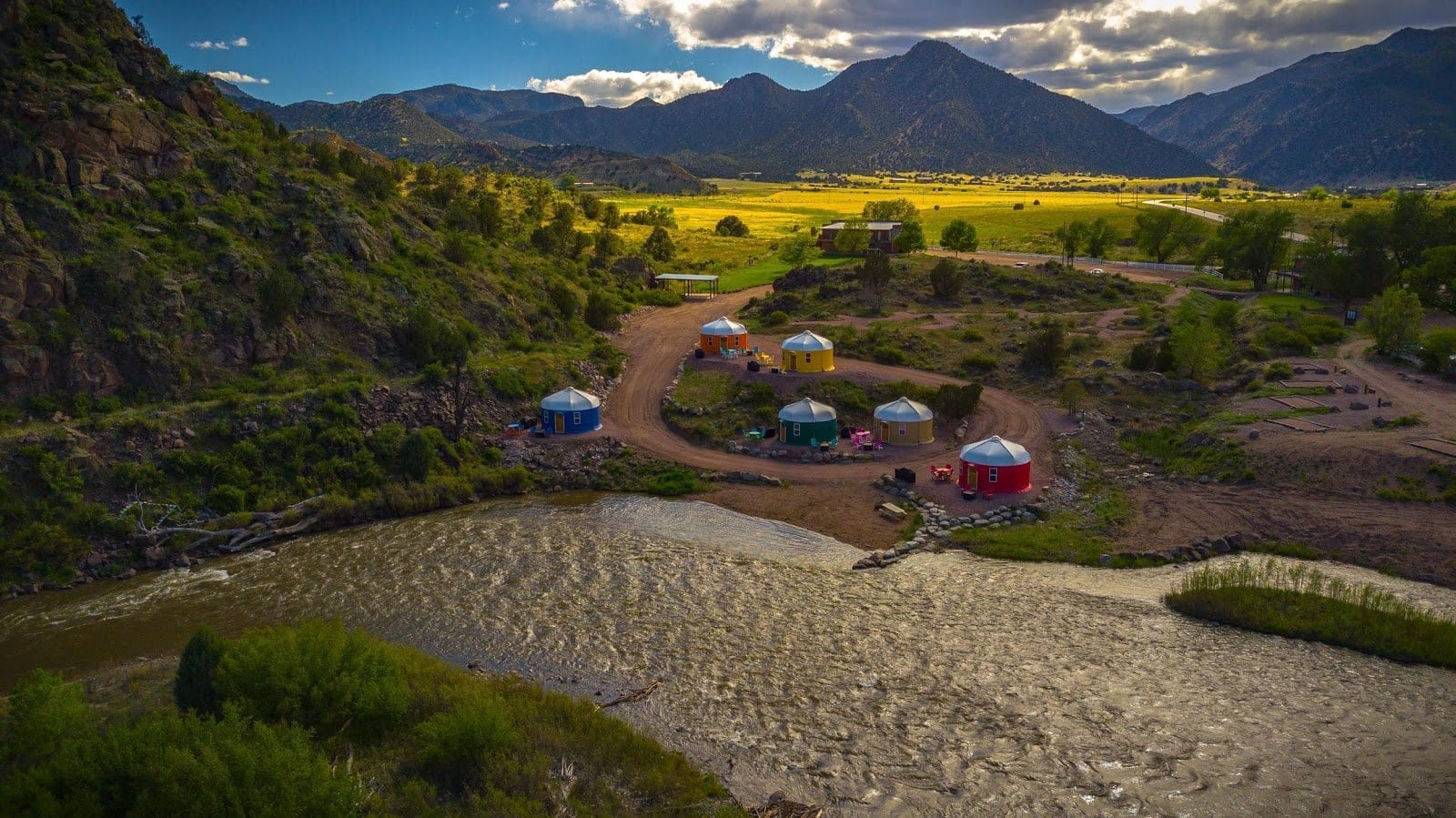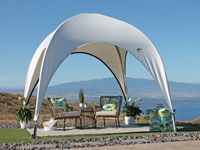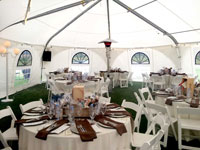A growing number of people are going small with their living spaces as part of a movement that’s been rising in popularity for the past decade. Known as the Tiny House Movement, the idea is that people live a simpler, more cost-effective lifestyle in a smaller space. These smaller spaces include a wide range of house types and styles, but in most cases, there’s a requirement for portability — even igniting a growing interest in living out of one’s vehicle, known as vanlife.
Tiny living spaces aren’t for everyone, however; those considering such a drastic lifestyle change usually want to try it out with a vacation rental first. This interest in small dwellings as well as some other key benefits make tiny spaces a lucrative investment for campgrounds, adventure tours, and other recreational businesses.
While the Tiny House Movement and vanlife may be newer to the social and architectural scene, the idea of sleeping in a small, portable home is hardly original. In fact, nomadic dwellings called yurts were used as far back as 600 B.C., and their precursors were used in Russia, Central Asia, and Mongolia as long ago as 3000 B.C.
Yurts are round, portable structures typically made of a wood or wood-lattice frame covered by many types of fabric, animal skins, or other flexible materials. New materials are transforming the yurts of the past into modern and high-performance structures designed to be lightweight and extremely portable.
[Learn more about yurts and yurt camping here]
More recently, campgrounds and parks have used yurts for recreational camping, but yurts are growing in popularity as another kind of vacation rental through sites such as Airbnb or Vrbo.
Revenue Potential With Yurts as Vacation Rentals

While individuals who list their yurts as vacation rentals on these sites can certainly benefit from some extra income, the revenue potential of listing a yurt for rent varies greatly.
Some of the main factors that affect yurt income are:
- Location: Part of the appeal of sleeping in a yurt is getting away from it all and “roughing it” a little bit with some glamour camping (i.e. “glamping”). A remote atmosphere can be achieved even in the middle of an urban environment. Décor also goes a long way to transform a standard yurt into a luxury yurt designed for guest comfort, tranquility, and relaxation.
- Season: While the materials used in yurt construction make the space comfortable in both cold and warm weather, other factors related to the time of year may impact rentals. If there are plenty of nearby activities during all seasons, yurt rentals may be more consistent year-round.
- Amenities: Stocking the yurt with a heat source (wood-burning stoves are more attractive to renters than a plug-in heater) and cozy blankets for the colder seasons can help draw in year-round renters. Some of the extra amenities you can offer with your yurt vacation rental include:
- Running water
- Bathroom facilities
- Electricity
- TV, cable, or a streaming service such as Netflix
- Outdoor lounge area (with twinkling lights, an outdoor heater, or a fire pit)
- Sauna or hot tub
- Audience: Renter interests will affect rental numbers to a degree as well. For example, yurts at state parks carry a lot of appeal for families who want to enjoy the great outdoors during the off and shoulder seasons when tent camping is uncomfortable due to the weather. But these yurts have a very different feel than a yurt designed with more of a glamping and luxurious allure.
These things should all be considered when installing yurts as vacation rentals, and in some cases, yurts may be better suited for vacation rentals than other types of structures. For example, the Royal Gorge Rafting and Zip Line Tours company has been offering rafting and zip line tours for 15 years. While they offer vacation rentals for large families (homes that can sleep up to 20 people and costed $500 to $600 per night), their customer base is primarily made of families with a couple of children. These smaller and more budget-conscious families weren’t looking for a large vacation rental home.
The company decided to purchase and install six 20-foot yurts. Each yurt is outfitted with two queen beds (one on the main floor and the other in the loft), windows, and a venting dome skylight and is custom-designed in bright and cheerful colors. They decided to go with WeatherPort®yurts from Alaska Structures® because they knew they were high-quality yurts and could be designed to provide families with the ultimate glamping, rafting, and zip line experience.
The yurts were staged on the bank of the Arkansas River to capture the beautiful Colorado setting, and were outfitted with nice color-matching furniture, an outdoor kitchen complete with a BBQ grill, and a gas burning table.
“Everyone who goes in them is surprised by how nice they are!” says Ty Seufer, owner of Royal Gorge Rafting and Zip Line Tours. “People love them. They are designed for outdoor living. It’s real peaceful down by the river.”
Benefits of Adding a Yurt

Yurts can bring some added benefits and additional revenue streams for recreational facilities, guide and outfitting companies, wilderness resorts, campgrounds, and adventure companies such as Royal Gorge Rafting and Zip Line Tours. The increasing popularity of yurts for tiny living can be used to draw more customers and increase business potential in the following ways:
- Bring in new types of customers.
- Encourage customers to stay overnight or for multiple nights.
- Incentivize customers to take longer tours or participate in more activities.
Offering yurts as vacation rentals can also increase the sense of appreciation for the outdoors and augment the atmosphere of your outdoor or adventure company. It’s not just a place to go and enjoy some recreational activities; it’s also a spot for relaxing and enjoying the peacefulness of nature and the environment.
Regulations for Installing a Yurt
Yurts as vacation rentals are generally less regulated than brick-and-mortar buildings because they are usually considered temporary structures. That being said, be sure to check with your local building department as your county or state may have different regulations and require going through the process of getting a building permit, especially if you are considering building a yurt on a concrete foundation or adding plumbing and/or sewage.
Whether you plan to temporarily use your yurt for a specific season or install and use your yurt year-round, it is important to know the building codes for your area and what structures should be designed to withstand for your guests’ safety and durability. WeatherPort steel-framed yurts are custom-built structures that are engineered to meet the wind loads and snow loads required by local or international building codes.
What to Pack When Staying in a Yurt
For people considering staying in a yurt vacation rental, the packing list will depend on the level of accommodations offered by the renting company. If not readily available on their website or rental listing, we encourage you to contact them for a recommended list of items to bring so your stay is more enjoyable! Below are some examples.
General Yurt Packing List
- Sleeping bags, blankets, linens, pillows, or other bedding
- Food and water (some yurt rentals have drinking water)
- Wipes and other hygiene materials
- Sunscreen
- Clothes (pack appropriately for the weather)
- Cots, mattress pads for camping, camping chairs, folding table, and other furniture if not provided
- Fuel, gas, or firewood
- Headlamp, flashlights, or camping lantern
- Board games, puzzles, playing cards
Before You Go
There are some key things to research before you stay in a yurt, which may influence your packing list:
- Weather: For cold weather conditions, bring extra layers of clothes, bedding, and potentially a portable heater if the yurt doesn’t have one. Be sure to check with the renting company if heaters are allowed, and if the provided power will be enough to operate an electric heater. In the summer or hot weather, bring a fan (battery-powered fans are recommended if electricity is not available in the yurt), a swimsuit, and towels if near a lake, river, or beach. If the forecast predicts rain, be sure to bring a raincoat, an umbrella or canopy, and maybe extra towels to dry things off as needed.
- Cooking and camping: What camping and food prep materials are provided? Some yurts have a camp stove, dishes, utensils, and other camping gear such as chairs. Make sure there’s enough for your group (even if they provide camp chairs and dishes, it may only be for two to four people).
- Activities: What activities or attractions are available nearby? Look up things to do when you’re there, so you have a good list of indoor and outdoor activities planned.
- Campfires: Are campfires allowed? With a lot of the county in drought or under wildfire watch, there may be restrictions, and you don’t want the kiddos to be excited about having s’mores over an open flame if campfires are restricted. Sometimes, you are allowed to have fires in designated campground fire rings or use portable gas stoves.
More Information on WeatherPort Yurts
WeatherPort® is a brand of high-quality fabric buildings from Alaska Structures®. If you are interested in learning more about our fabric buildings and remote camp systems please contact us by calling +1-907-344-1565 or completing our online form to request a consultation.

















































































Leave a Reply